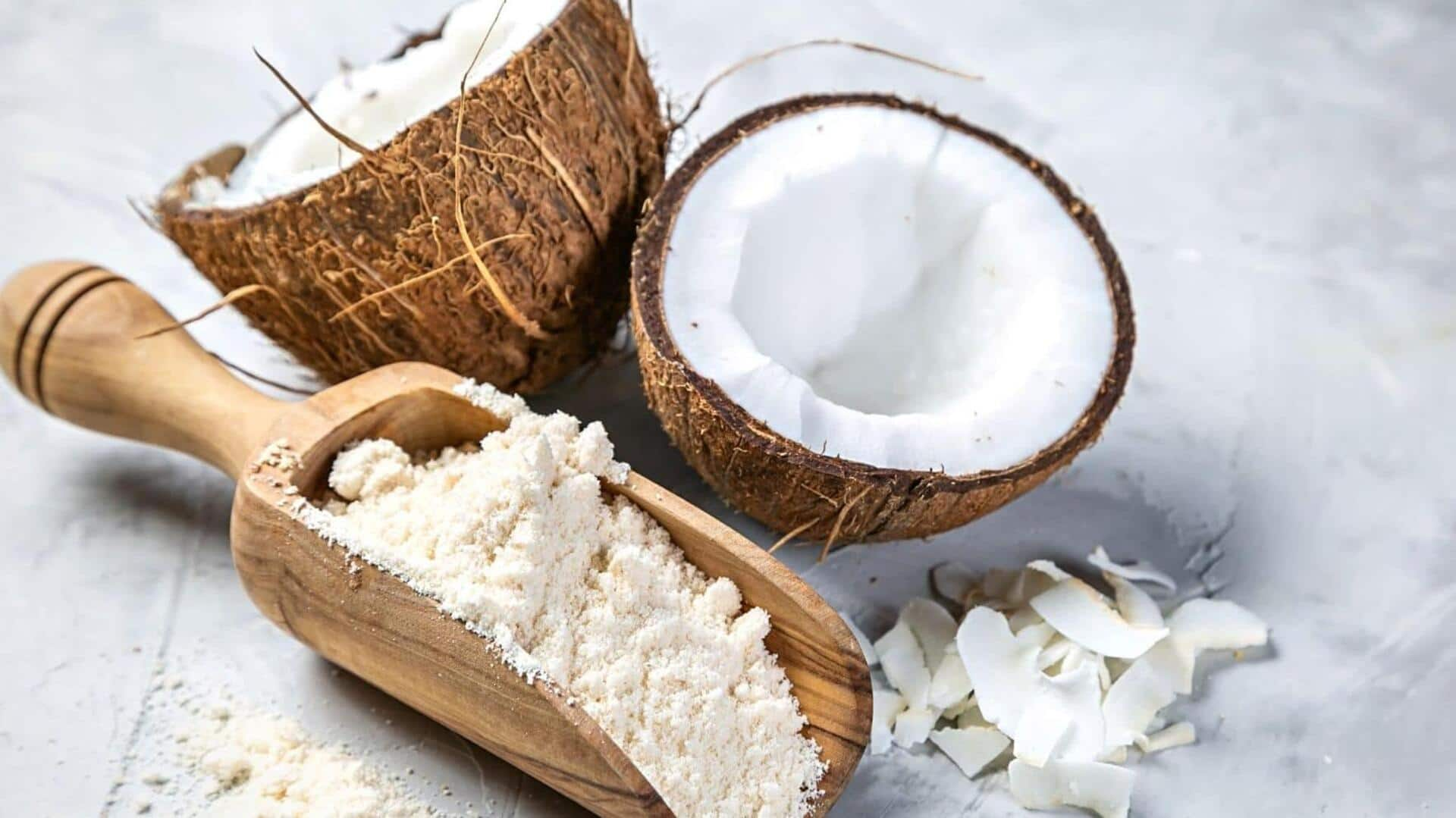
5 surprising ways to use coconut flour in your baking
What's the story
Coconut flour, which is prepared from dried coconut meat, is a favorite among those looking for gluten-free alternatives.
It is rich in fiber and low in carbs, making it excellent for a variety of diets.
Apart from substituting wheat flour, it adds flavor and texture to baked goodies.
Check out five creative ways to use coconut flour in your baking projects.
Moisture boost
Enhancing moisture in cakes
Coconut flour's high absorbency makes it perfect for retaining moisture in cakes.
When added to cake batter, even a little goes a long way in preventing dryness by locking in moisture while baking.
This quality comes especially handy when making gluten-free cakes, which tend to get drier than the wheat-based ones.
Filling thickener
Thickening pie fillings
Coconut flour can also be an excellent pie filling thickener. It absorbs liquid quickly and helps you achieve the right consistency without changing the filling's flavor.
When you use coconut flour instead of cornstarch or other thickeners, you can create pies with a smooth texture as well as better nutritional value.
Crust crispiness
Creating crispy crusts
For all those who love crispy crusts on their bakes, coconut flour makes a great option.
When used in the crust mixture for tarts/quiches, it adds a lovely crunch to them.
It also imparts mild hints of coconut flavor. This makes it a great option for both sweet and savory dishes.
Nutrient boost
Adding nutritional value to muffins
Adding coconut flour in your muffin recipes not only makes them healthier but also gives them a nice texture.
Being rich in fiber and healthy fats, coconut flour adds more nutrients that are missing in regular muffins made with refined flours.
Making them more satisfying and perfect for mindful eaters.
Ingredient binder
Binding ingredients together
Coconut flour's binding properties also come in handy for holding ingredients together in recipes like granola bars or energy bites.
Its fine texture allows it to blend seamlessly with other components, ensuring they remain intact during baking or setting processes.
This quality is particularly advantageous when you're creating no-bake treats that require structural integrity without compromising taste or nutrition.